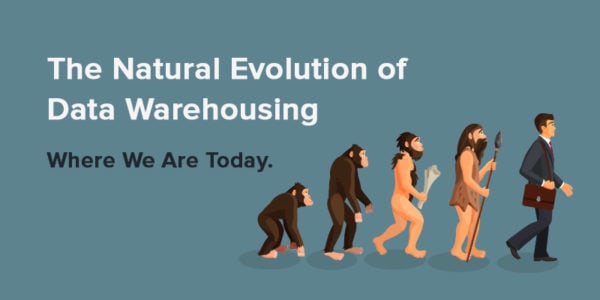The Natural Evolution of Data Warehousing—Where We Are Today
- An increase in demand to acquire data when it’s needed. Traditional warehouses were designed to consume flat file structures and data from other relational systems. Today, that’s no longer the case.
- The variety of data sources has increased dramatically and this has pushed data warehouses to the edge of their capacity, in terms of how fast data sources can be acquired. Some of the legacy warehouses can't keep up with this real-time demand.
- The type of users working with legacy warehouses has changed. Data scientists are one of the biggest and newest groups and they have very specific requirements for the data they use. They need way more processing power than a traditional warehouse may be able to give. They also need the ability to use the tool sets they're most comfortable with, which, in many cases, warehouse databases don't support. One of the top requests we hear from data scientists is they want access to raw data.
- More automated systems consume data for analytics and existing warehouses are just not well-suited to serve this type of workload.
- Maintaining traditional data warehouses is a capital expenditure. And maintaining a modern data warehouse on the cloud is an operational spend, which many organizations find an attractive alternative.
- Lost business opportunities
- Unhappy users
- Performance problems
- Rising costs
- Shadow IT
- Limited visibility into KPIs

On this page
Share this
Share this
More resources
Learn more about Pythian by reading the following blogs and articles.
Let DataGuard Broker Do ALL The Work
![]()
Let DataGuard Broker Do ALL The Work
Feb 18, 2020 12:00:00 AM
2
min read
Where in a Modern Data Platform Should You Process Your Data?
![]()
Where in a Modern Data Platform Should You Process Your Data?
Oct 26, 2020 12:00:00 AM
5
min read
MariaDB Temporal Tables: Uncut & Uncensored (Part I)
![]()
MariaDB Temporal Tables: Uncut & Uncensored (Part I)
Dec 2, 2019 12:00:00 AM
4
min read
Ready to unlock value from your data?
With Pythian, you can accomplish your data transformation goals and more.
